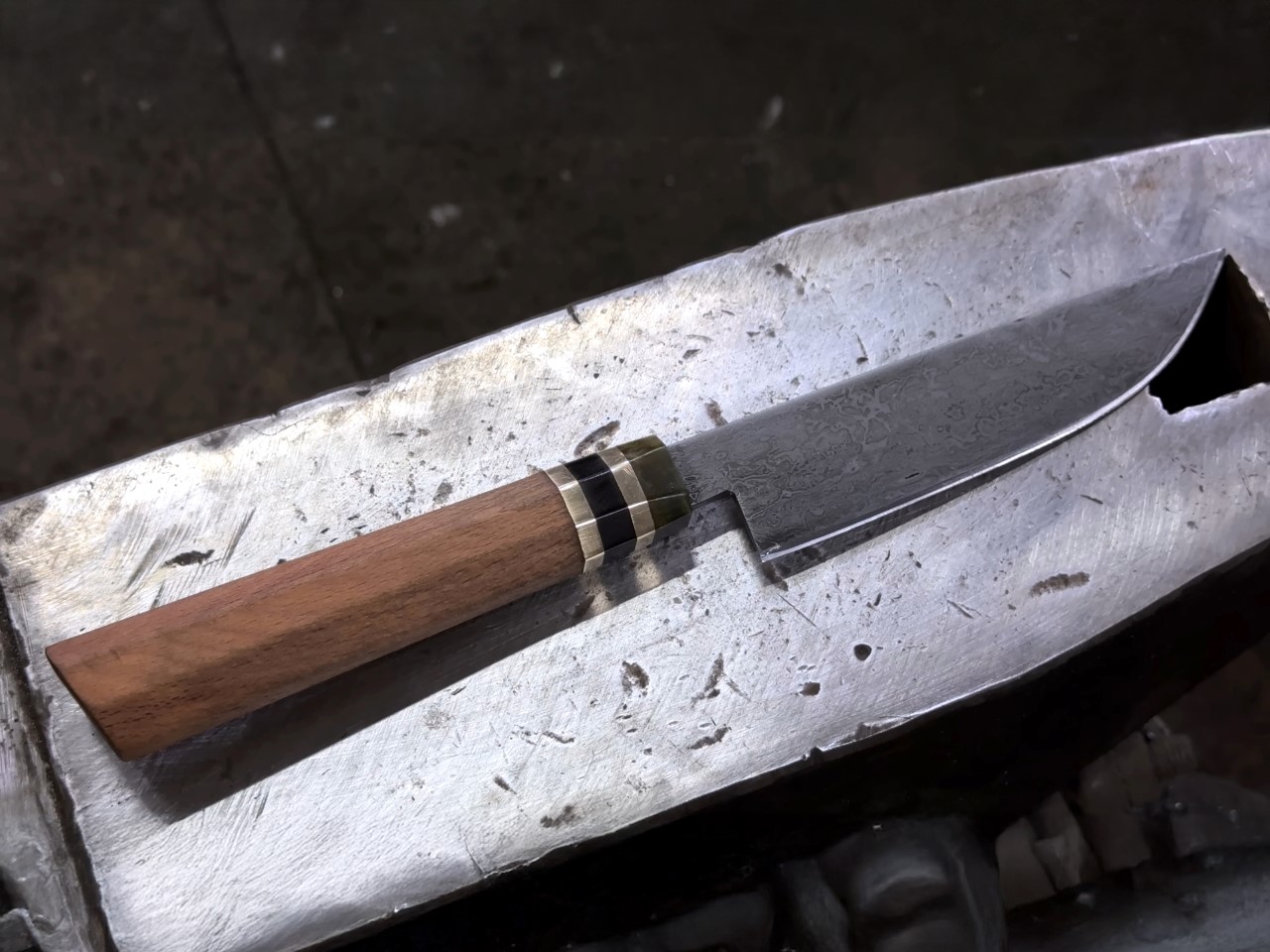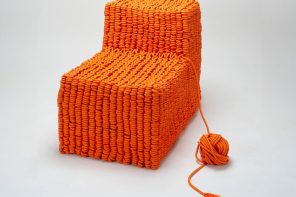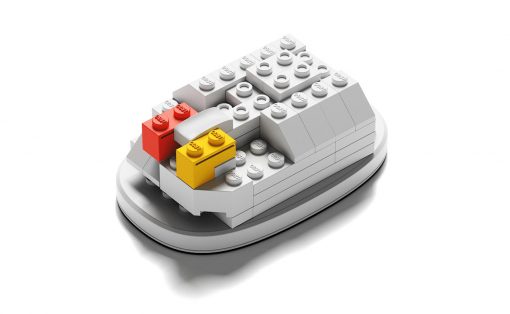But why make a massive blade out of something that can ALREADY cut things – you ask? It probably sounds like using a lot of small LEGO bricks to make one large LEGO brick, right? Well, the thing with razor blades is that they’re made to serve a finite purpose. They’ll last a few days, maybe a few weeks, and then they need to be discarded. Razor blades are ridiculously sharp, but they’re also ridiculously flimsy and you can break one with your own hands… so YouTuber Knives Project decided to just use a bunch of them to make something more everlasting, more worthy of being cherished, while being just as sharp.
It took 350 blades being forged together into a metal ingot to make this final knife. The result is truly heirloom-worthy. The knife sports a gorgeous marbled blade created thanks to the combination of the steel used in the razors as well as the steel powder added into the ingot to fill in the air gaps. The knife finally gets a nice wooden handle with a bit of metal at the beginning of the hilt.
Designer: Knives Project
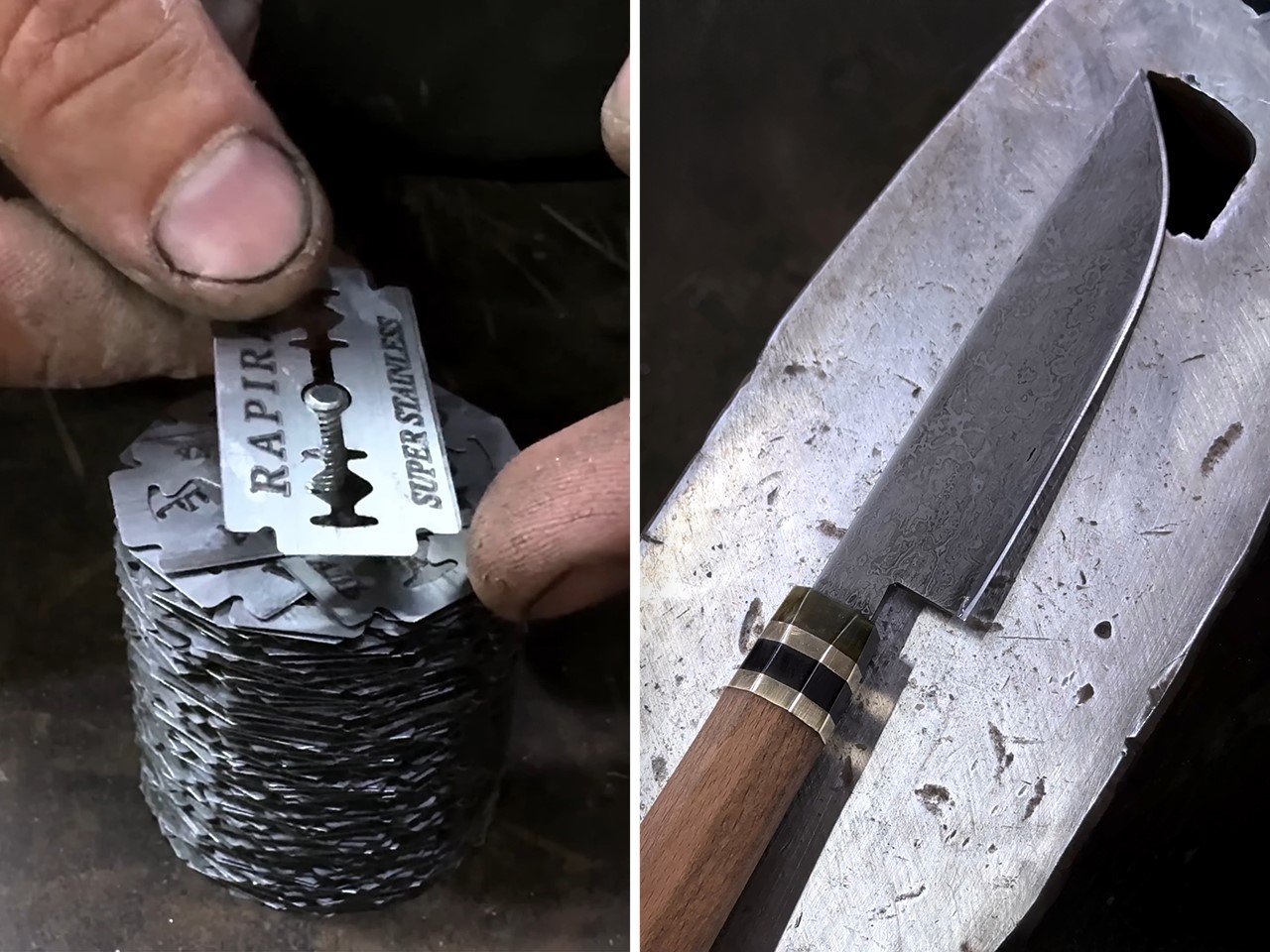
The 15-and-a-half-minute video guides you through Knives Project’s process, from forging the steel ingot to shaping it, etching it, honing it, and then building the handle for the knife. The result looks rather artisanal, with a kitchen knife-style design sporting a drop-point edge and a wonderful marbled body reminiscent of Damascus Steel. The knife also comes with a wooden handle with an octagonal cross-section that’s easy to grip and maneuver.
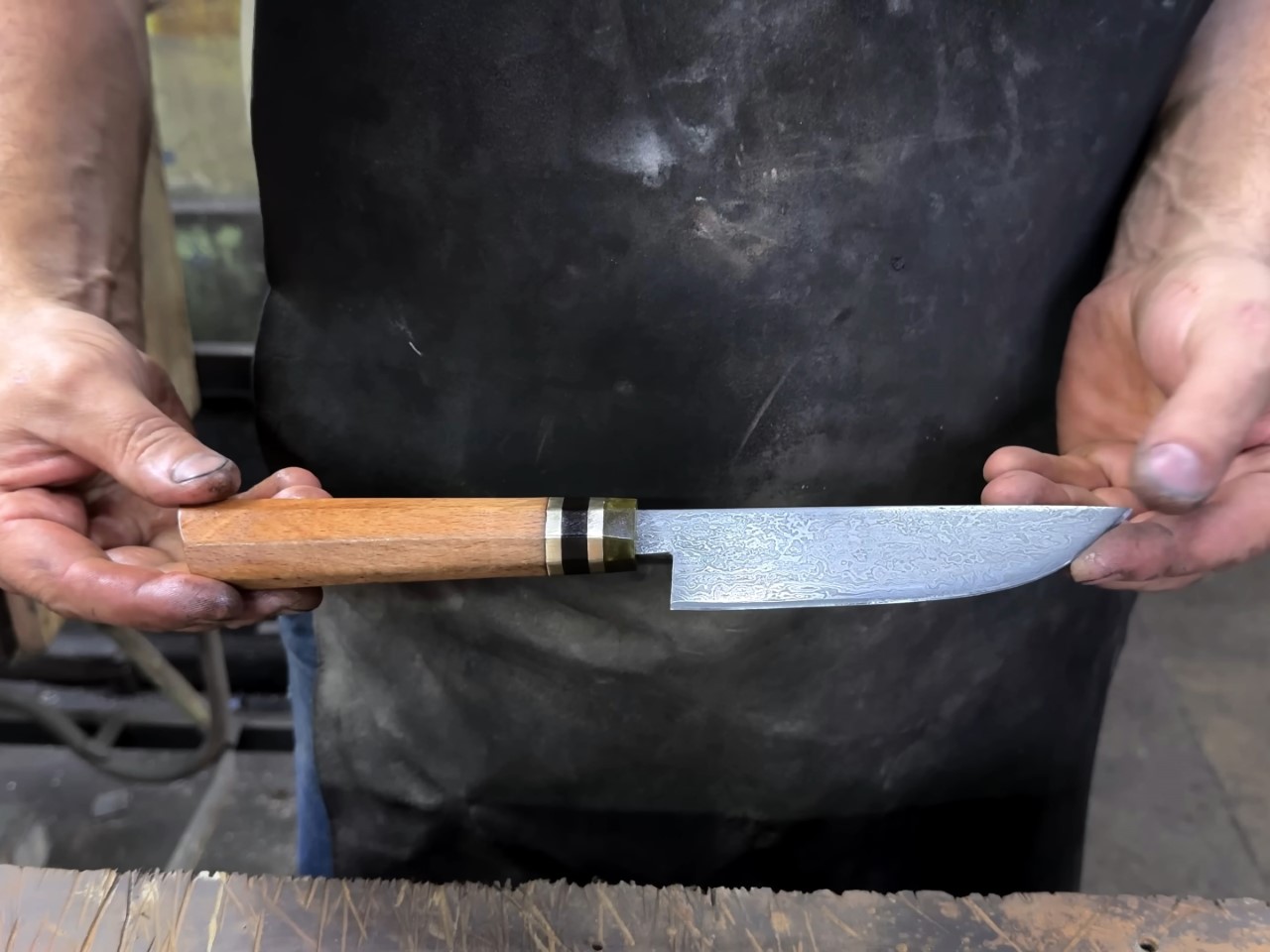
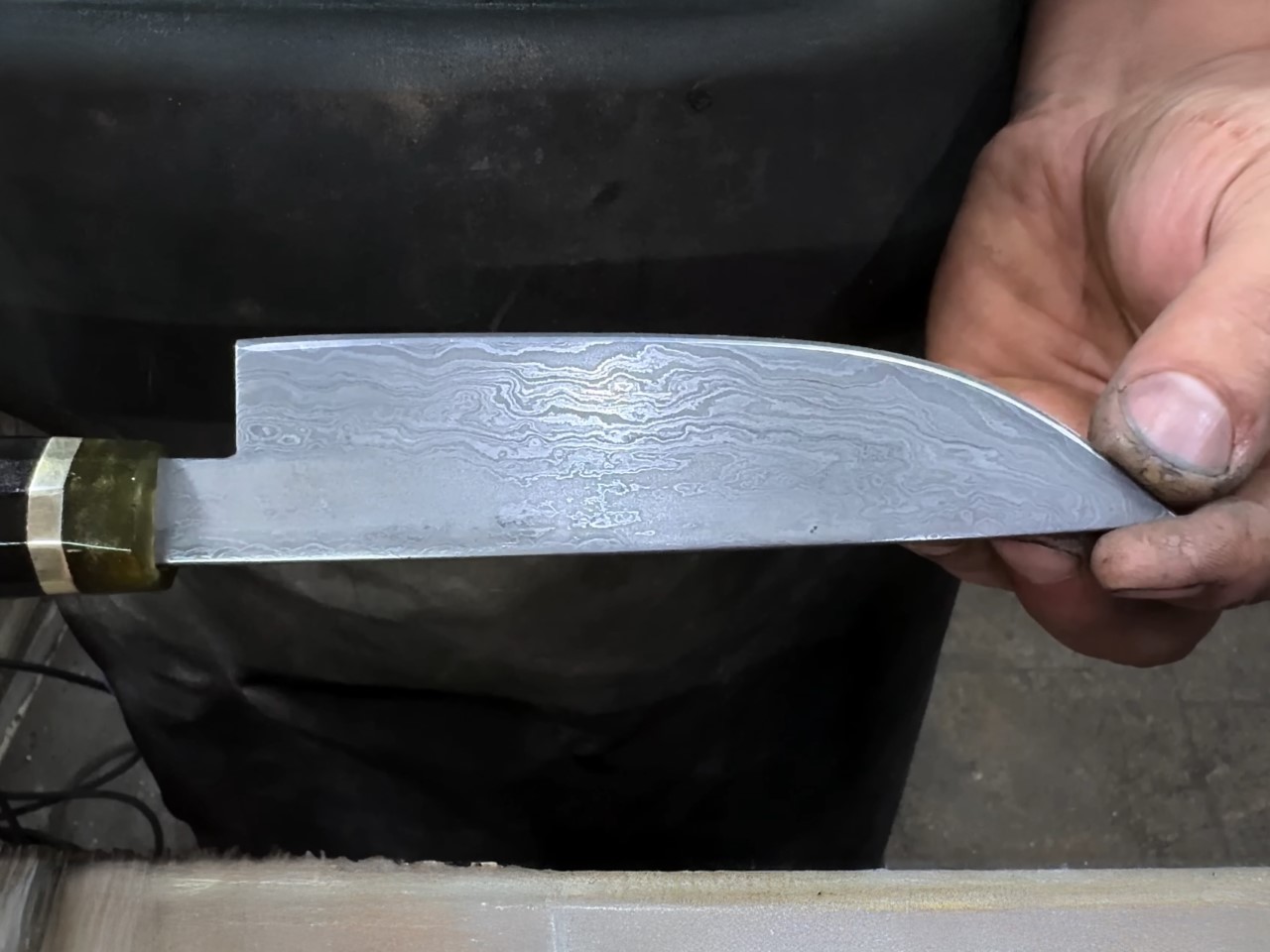
Razor blades are primarily made from martensitic steel – a steel alloy known for its high strength and wear resistance, with the more expensive ones being made from carbon steel. Given that the knife uses 350 of these razors, it’s possible Knives Project sprung for regular blades, adding them one by one into a bolt to create a cylindrical form. The cylinder was then dropped into a hollow metal block and all the air gaps were filled with steel filings, resulting in a solid block that had no air gaps.
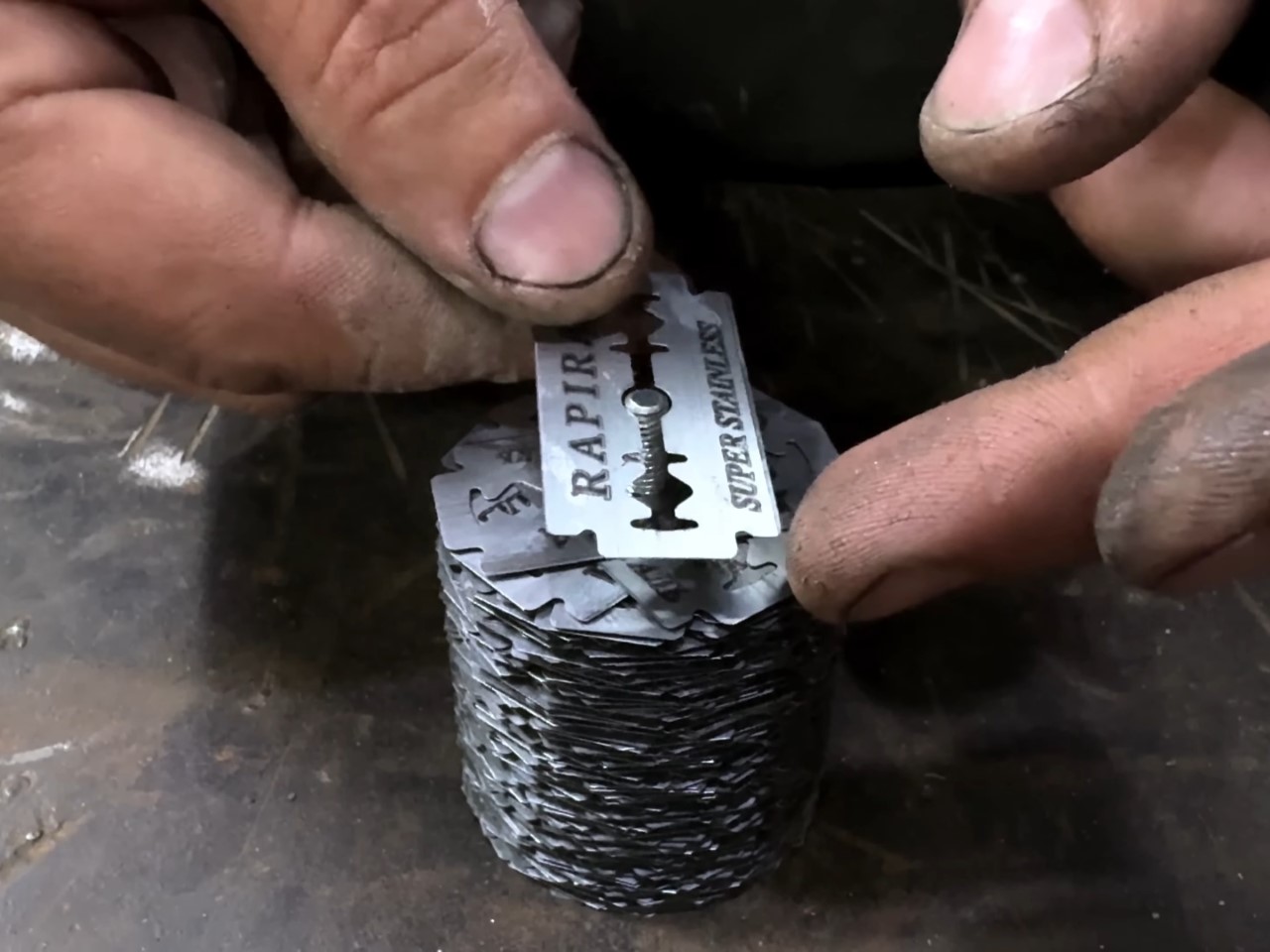
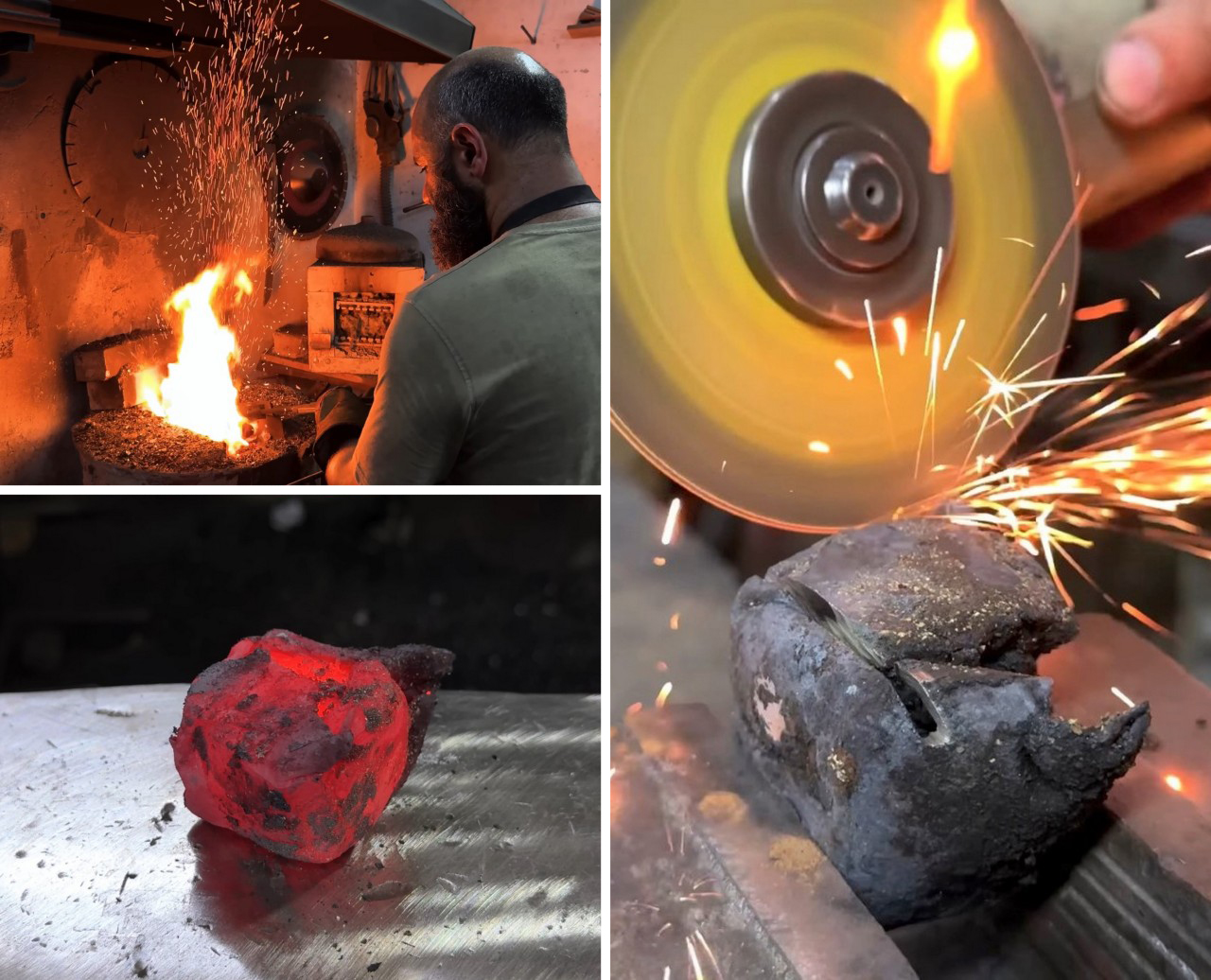
Once the metal block goes into the furnace, the steel inside begins melting, forming a rough cluster that Knives Project extracts by opening the outer box using an angle grinder. The reason is that this outer box is made of iron, while its internal components are the steel you need to form into an ingot.
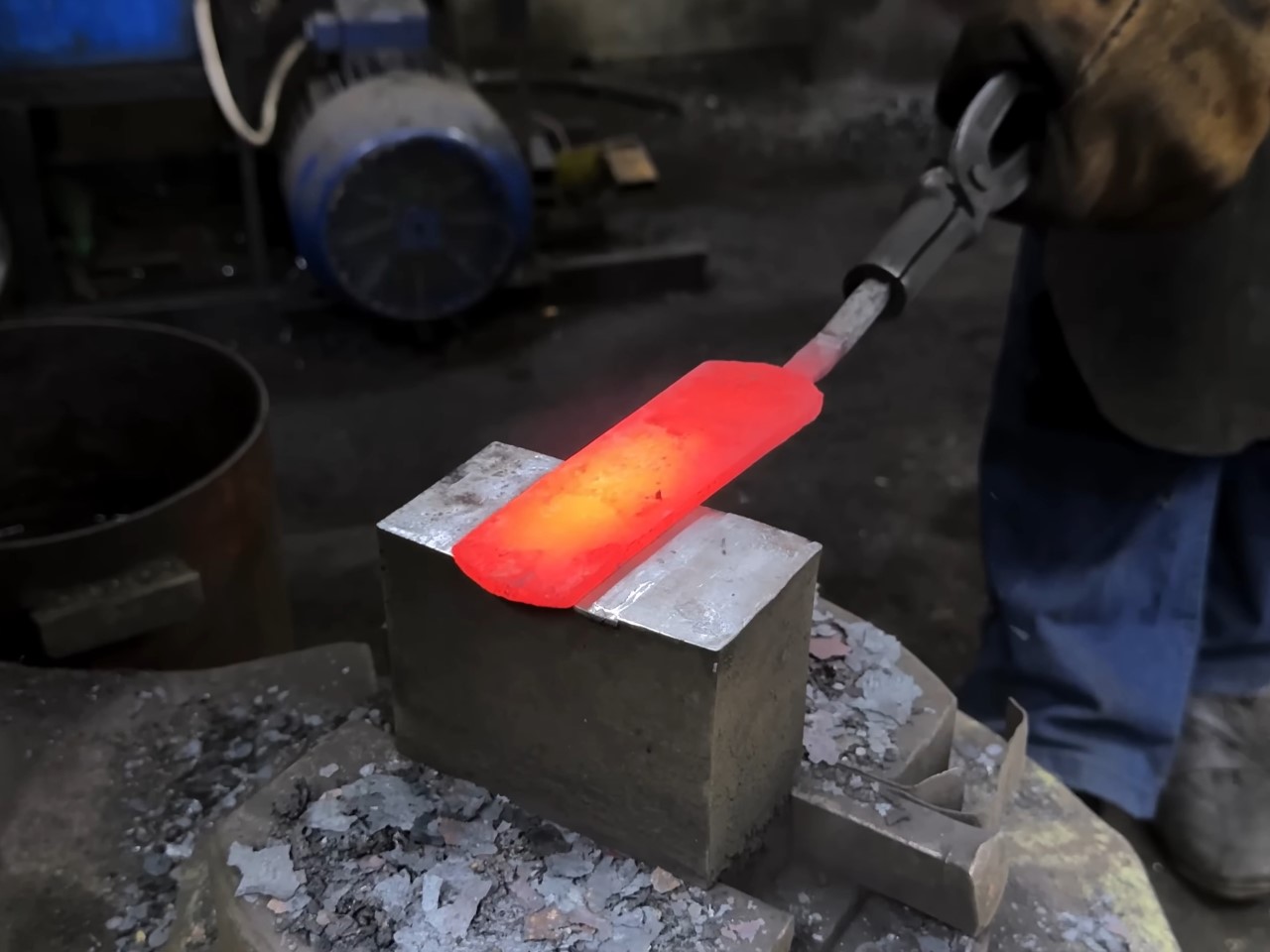
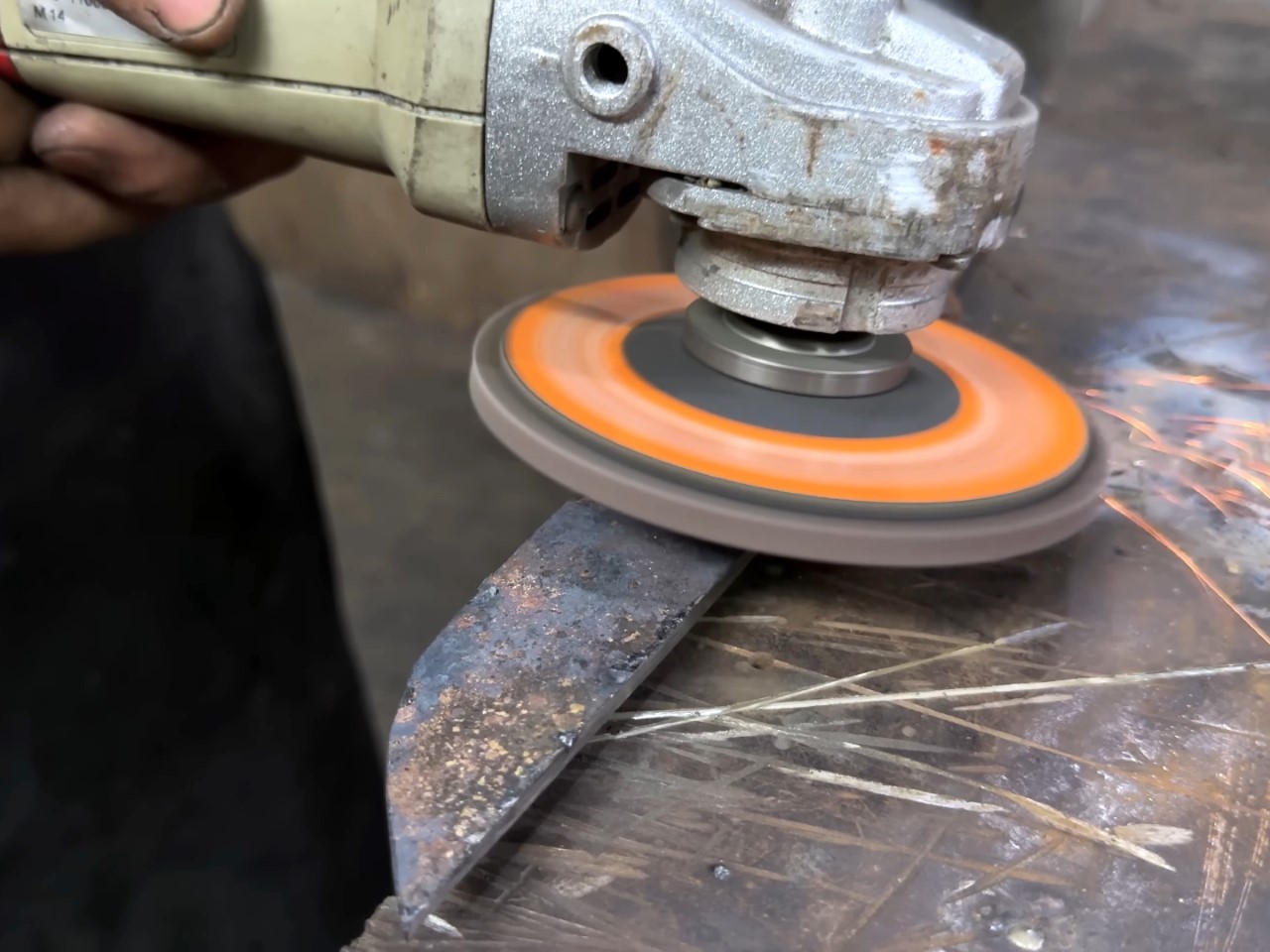
The process involved constantly heating, hammering, and forming the resulting metal ingot into a flat strip that could then be cut into the knife’s shape. Once cut, the surface was made smooth before being dipped into an acid bath to reveal the marbled pattern caused by the different kinds of steel used in the knife.
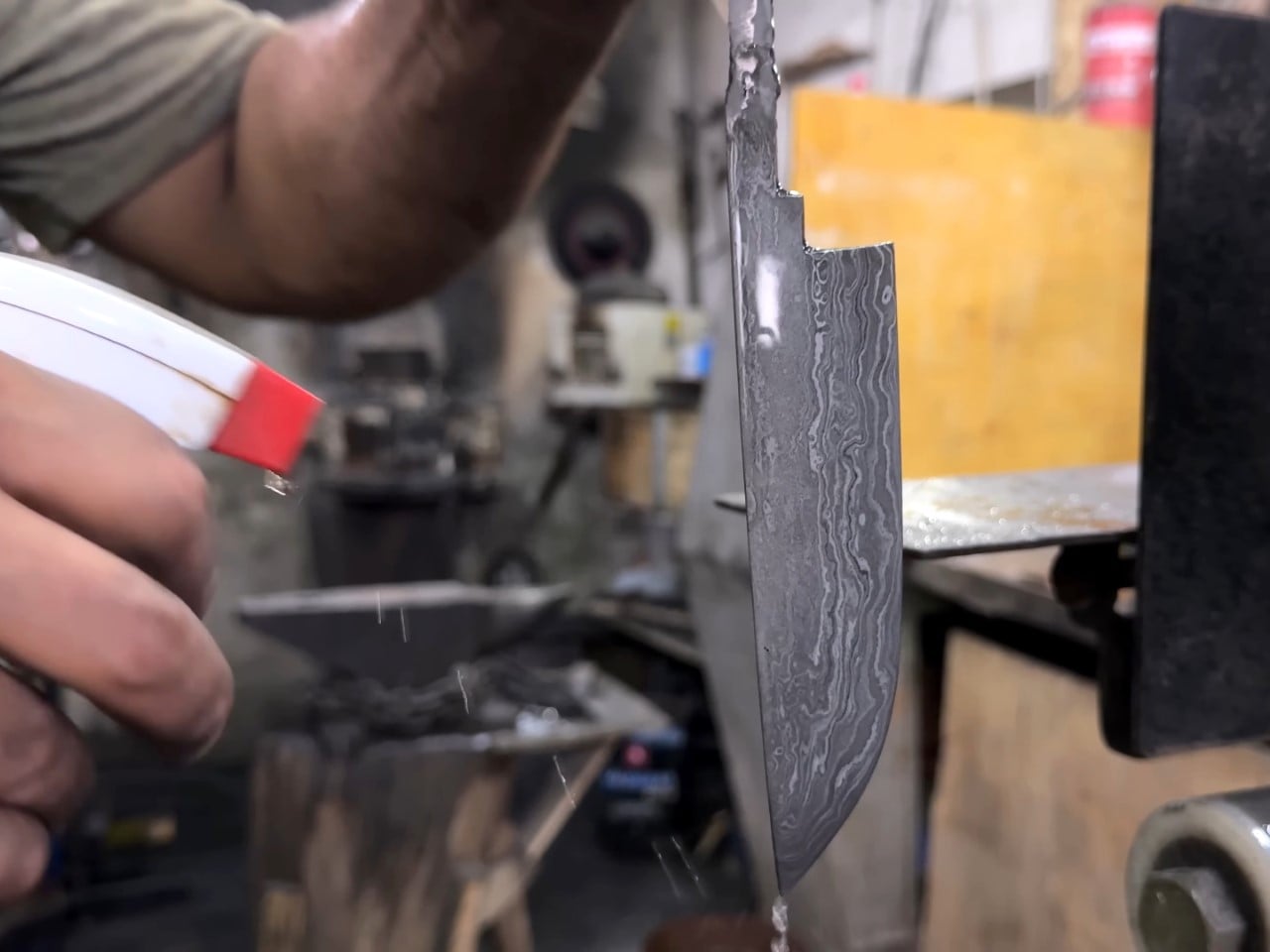
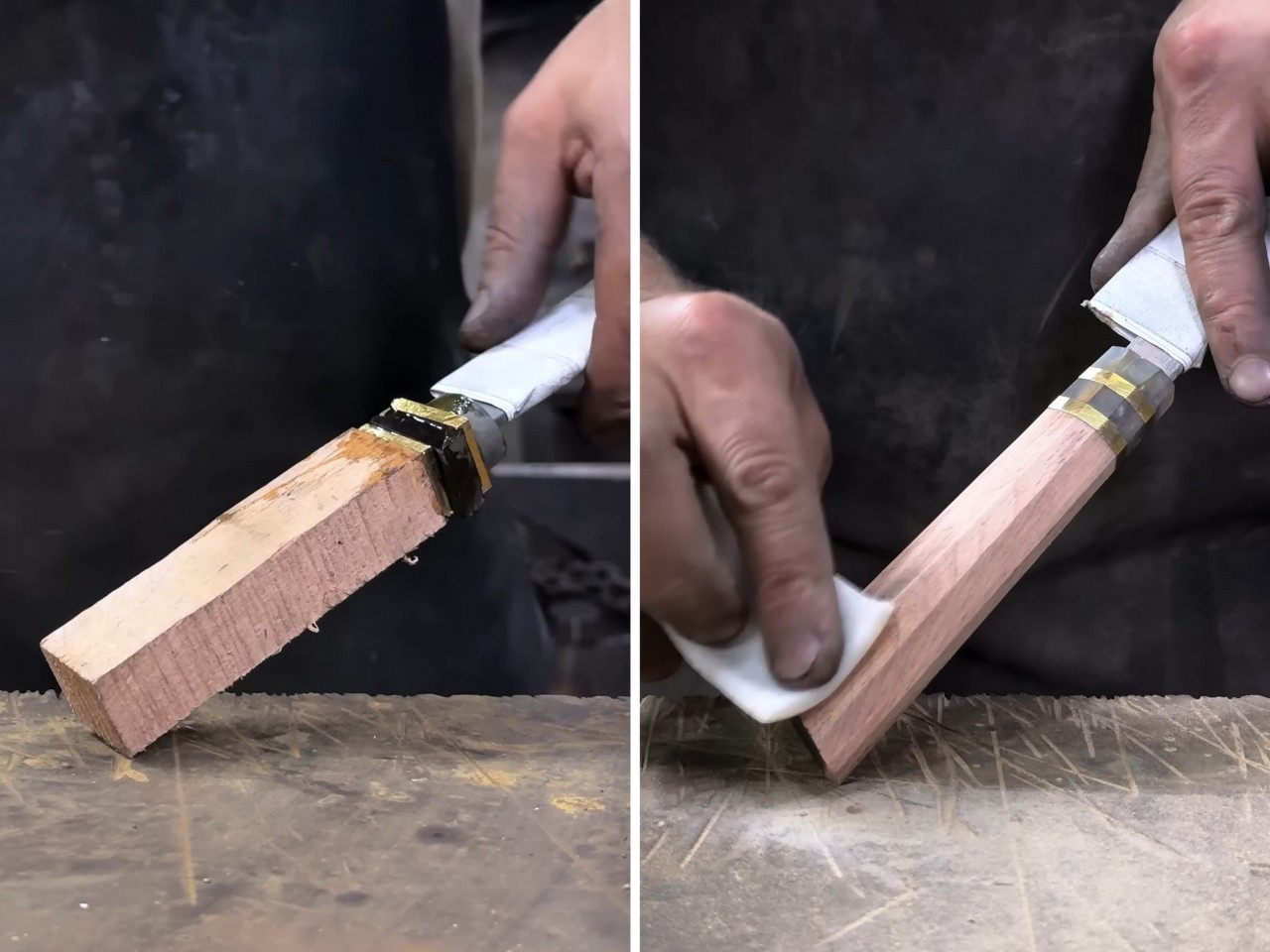
Once the blade was completely ready, Knives Project added a handle to it, using primarily wood combined with metal and a black block of presumably polymer to create a fair amount of contrast. The handle was given an octagonal cross-section and a fairly simple silhouette. Arguably a knife this pretty could be given a prettier, more ergonomic handle, but then again, that may steal from the star of the show, its blade – forged from 350 razors. Now if only Knives Project could cut that blade up into 350 pieces and turn them back into razors!
